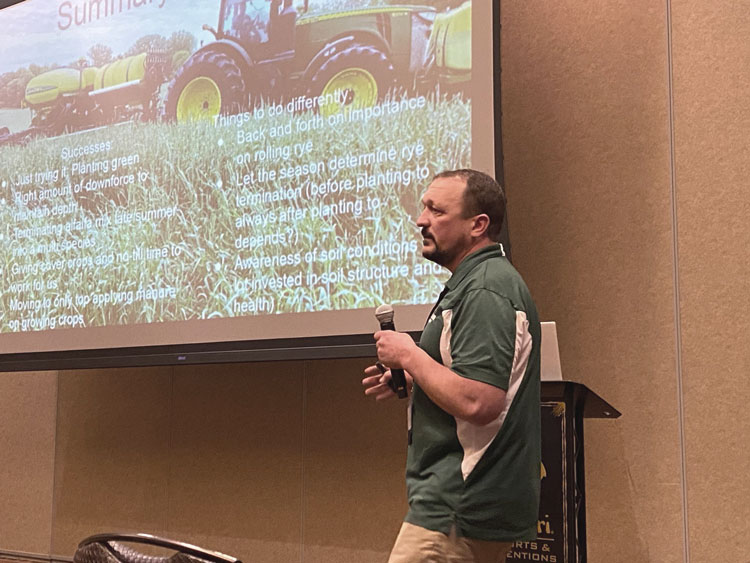
As more farms explore the potential of cover crops, trial and error helps people learn what works best when it comes to managing these covers and the plantings that follow. At the inaugural Wisconsin Water and Soil Health Conference, a panel discussion focused on getting seeds off to a good start in fields with high residue, a practice known as planting green.
One panelist was dairy farmer Derek Ducat, who farms at Deer Run Dairy with his dad, Duane, and their partner, Dale Bogart. At their location near Kewaunee, Wis., they are milking 1,800 cows and farming 2,500 acres of cropland. The Ducats also do custom planting and chopping for some other dairies.
Over the years, they have changed some of their agronomic practices, including the use the cover crops. Ducat said that for the last six years, a planting of winter rye follows most of their corn acres, and a multispecies mix is planted after winter wheat harvest and in terminated alfalfa fields. He shared that they still own a full line of tillage equipment, but on their own fields, they rarely use any of it as they have transitioned to a no-till system.
When planting corn into green cover, Ducat said they realized they needed to slow down, because trying to plant at a faster speed was hard on the planter. They used to plant at 8 or 10 miles per hour, but they have backed that down to 6 or 7 miles per hour.
They aim to get seeds 2 to 2.5 inches into the ground so they can benefit from the moisture there. He said at the slower speeds, they don’t have trouble planting at that depth. As for seeds per acre, he said that has not changed since they have been planting green; they follow what the variety of seed calls for.
One key, he noted, was to have the right amount of downforce on the planter to maintain the right seed depth. “Moving to hydraulic downforce helped with that,” he said.
Ducat said they also learned there are benefits of waiting and allowing the rye cover to get a little taller before planting corn, especially in springs when the weather is not quite fit for planting yet anyway.
“We have a lot invested in planting green and no till, and we don’t want to push it too soon and wreck anything we invested all this time in,” he said. They feel similar when it comes to harvest timing. He did recommend rolling the rye before planting corn to allow sunlight to get to the ground.
Ducat encouraged other farms to try planting green. “We were skeptical at first,” he shared about their initial experiences, “but everything worked pretty good. I am just glad that we tried it.”








